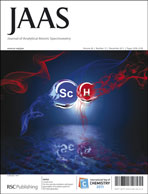Many historical documents written with iron gall inks are endangered by the corrosive effects of these inks. In this work, a combination of complementary analytical methods was used for the first time in order to study the “phytate” process which is used in conservation studios to stabilize damaged manuscripts. This process consists of an antioxidant treatment performed by means of a calcium phytate (CP) solution, followed by a deacidification treatment performed with a calcium carbonate (CC) solution. The antioxidant treatment capitalizes on the properties of myo-inositol hexaphosphoric acid (phytic acid) that inhibits iron through chelation. In order to use relatively low acidic solutions, the pH of the CP solution is increased up to values between 5 and 6, which is in the range of the CP precipitation threshold. This study was performed on laboratory samples made of paper impregnated with iron gall ink and artificially aged in climatic chambers. It aims to investigate how the CP precipitate impacts the efficiency of the treatment. Side effects, such as elemental losses and deposits, were measured by means of several analytical techniques (Fe–K Edge XANES, SEM/EDS, and ICP-AES). These measurements were crosschecked with a ready to use colour spot test made of bathophenanthroline impregnated paper. It appeared that the CP treatment should necessarily be followed by the deacidification treatment in order to achieve long term stability. The precipitation of CP in the treating solution does finally not impact the efficiency of the treatment despite the fact that it should theoretically lower the availability of phytate to chelate iron. A scenario is proposed to explain this point.

You have access to this article
 Please wait while we load your content...
Something went wrong. Try again?
Please wait while we load your content...
Something went wrong. Try again?


 Please wait while we load your content...
Please wait while we load your content...